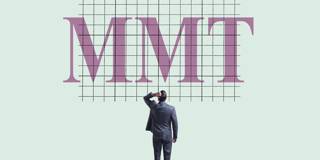With governments searching for ways to manage the unprecedented economic fallout of the COVID-19 pandemic, the policy agenda implied by Modern Monetary Theory has become all the more appealing. Yet, insofar as MMT ignores the demand for money, it is a risky guide for policymakers.
NEW YORK – Modern Monetary Theory (MMT) offers a dangerous half-truth that has become particularly seductive now that governments are desperate for tools with which to keep their economies afloat. A recent statement by MMT proponent Stephanie Kelton to the Financial Times is a case in point. Referring to the United Kingdom’s current Conservative government, she argues that, “They’re going to have massive deficits. And it’s fine.”
The problem is that while this assessment is correct for now, it won’t necessarily be correct in the future. Indeed, we should anticipate that the year following the end of the COVID-19 lockdown could be when MMT falls flat on its face – starting, perhaps, with a burst of inflation in the UK. But, even barring that specific outcome, policymakers are flirting with disaster if they accept MMT’s main message, which can be paraphrased as: “Deficit, schmeficit. Just boost public spending or cut taxes, then monetize the resulting imbalance.”
To be sure, some parts of MMT make sense. The theory views the treasury (or finance ministry) and the central bank as components of a single unit called the state. The treasury is the beneficial owner of the central bank (or, put another way, the central bank is the treasury’s liquidity window), which implies that central-bank independence is an illusion, especially when it comes to its fiscal and quasi-fiscal operations.

NEW YORK – Modern Monetary Theory (MMT) offers a dangerous half-truth that has become particularly seductive now that governments are desperate for tools with which to keep their economies afloat. A recent statement by MMT proponent Stephanie Kelton to the Financial Times is a case in point. Referring to the United Kingdom’s current Conservative government, she argues that, “They’re going to have massive deficits. And it’s fine.”
The problem is that while this assessment is correct for now, it won’t necessarily be correct in the future. Indeed, we should anticipate that the year following the end of the COVID-19 lockdown could be when MMT falls flat on its face – starting, perhaps, with a burst of inflation in the UK. But, even barring that specific outcome, policymakers are flirting with disaster if they accept MMT’s main message, which can be paraphrased as: “Deficit, schmeficit. Just boost public spending or cut taxes, then monetize the resulting imbalance.”
To be sure, some parts of MMT make sense. The theory views the treasury (or finance ministry) and the central bank as components of a single unit called the state. The treasury is the beneficial owner of the central bank (or, put another way, the central bank is the treasury’s liquidity window), which implies that central-bank independence is an illusion, especially when it comes to its fiscal and quasi-fiscal operations.